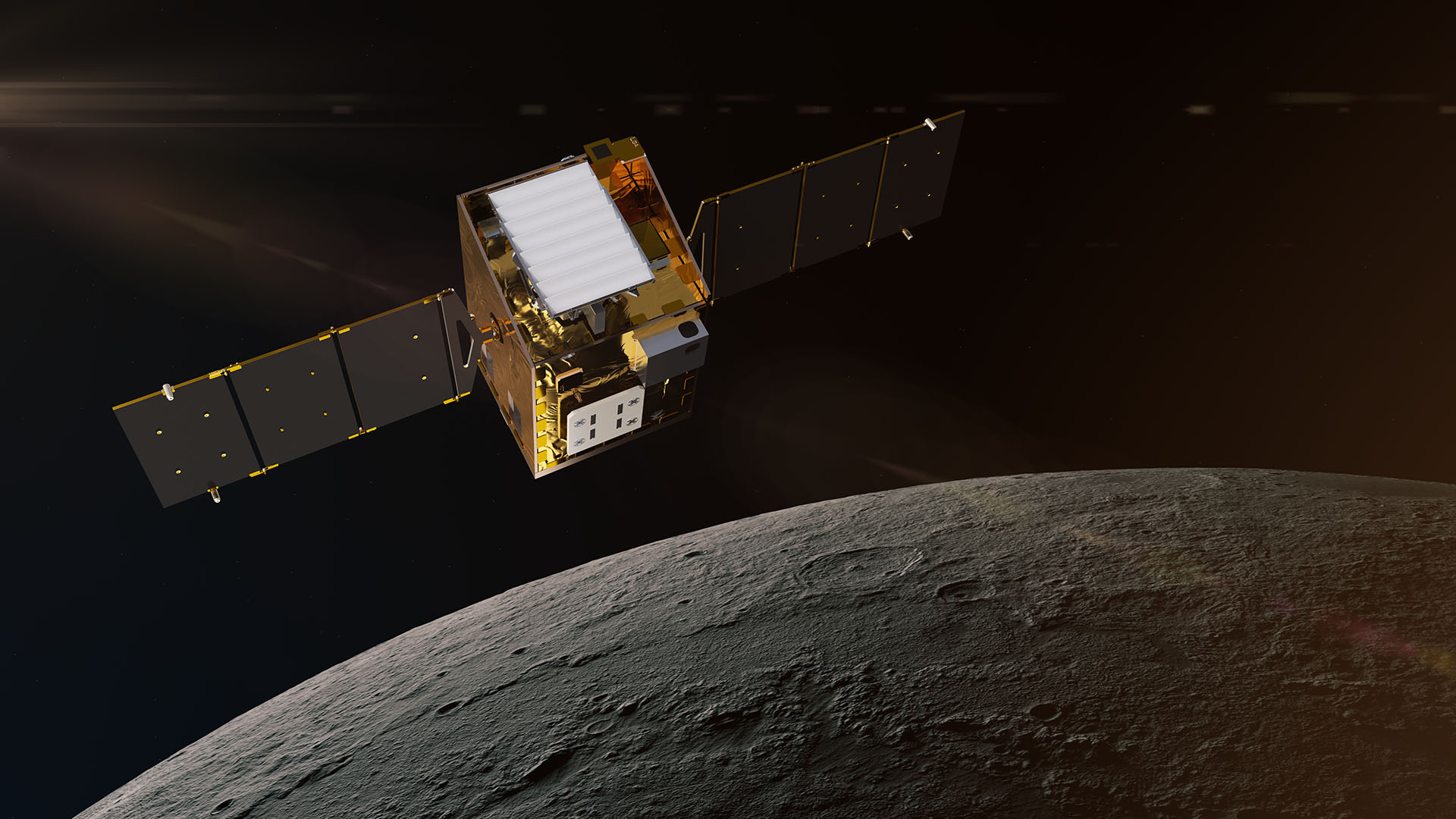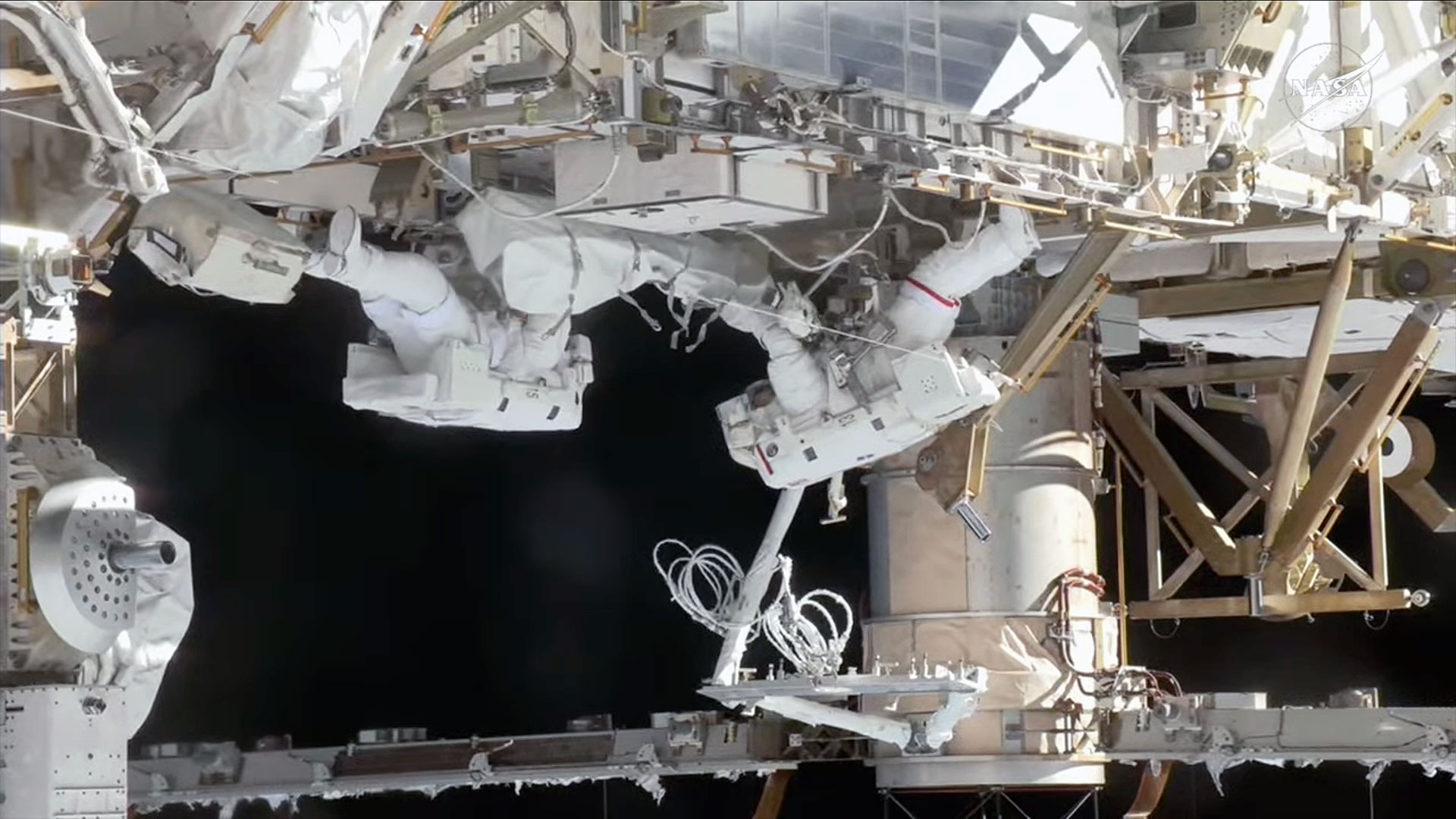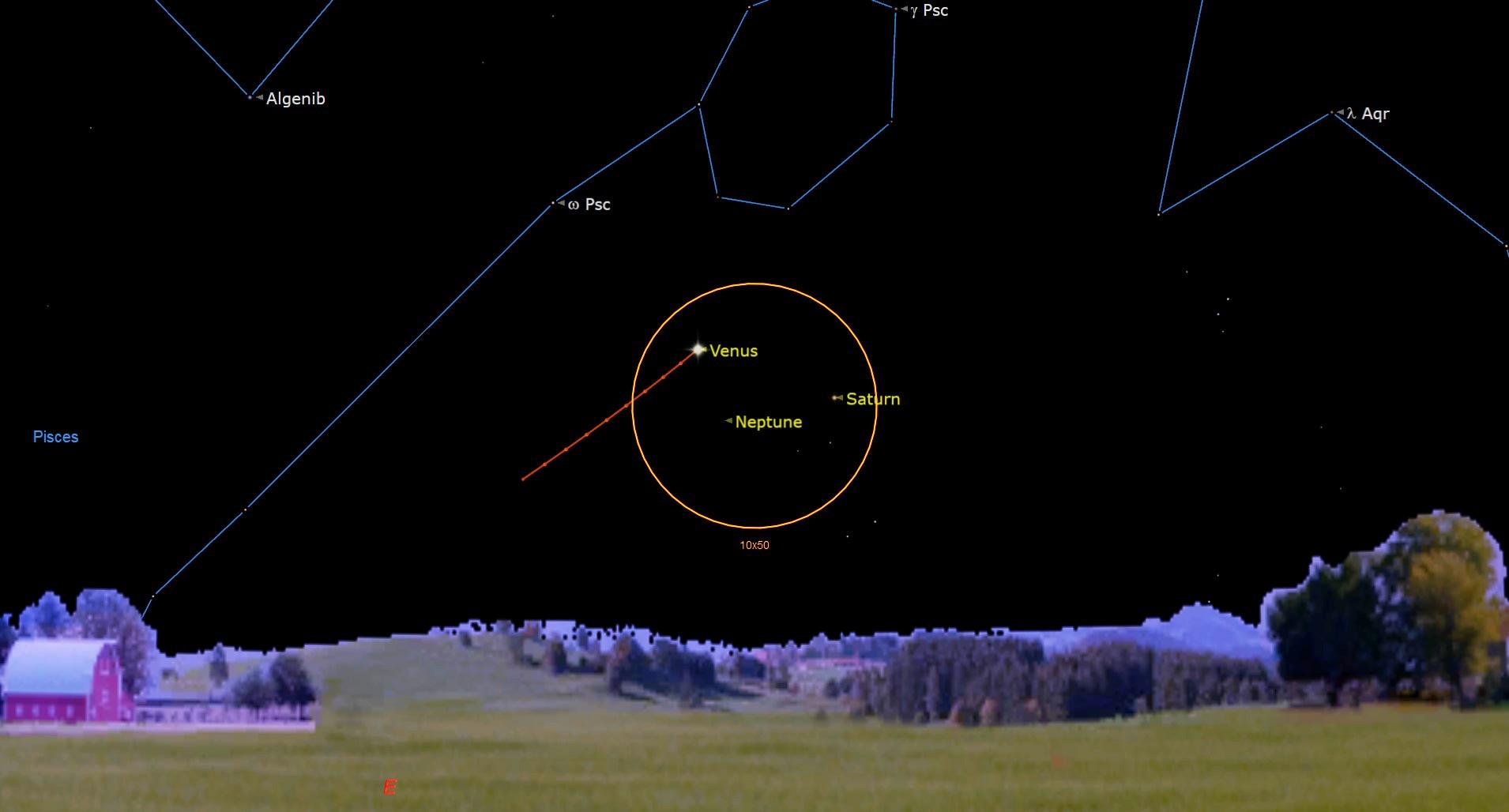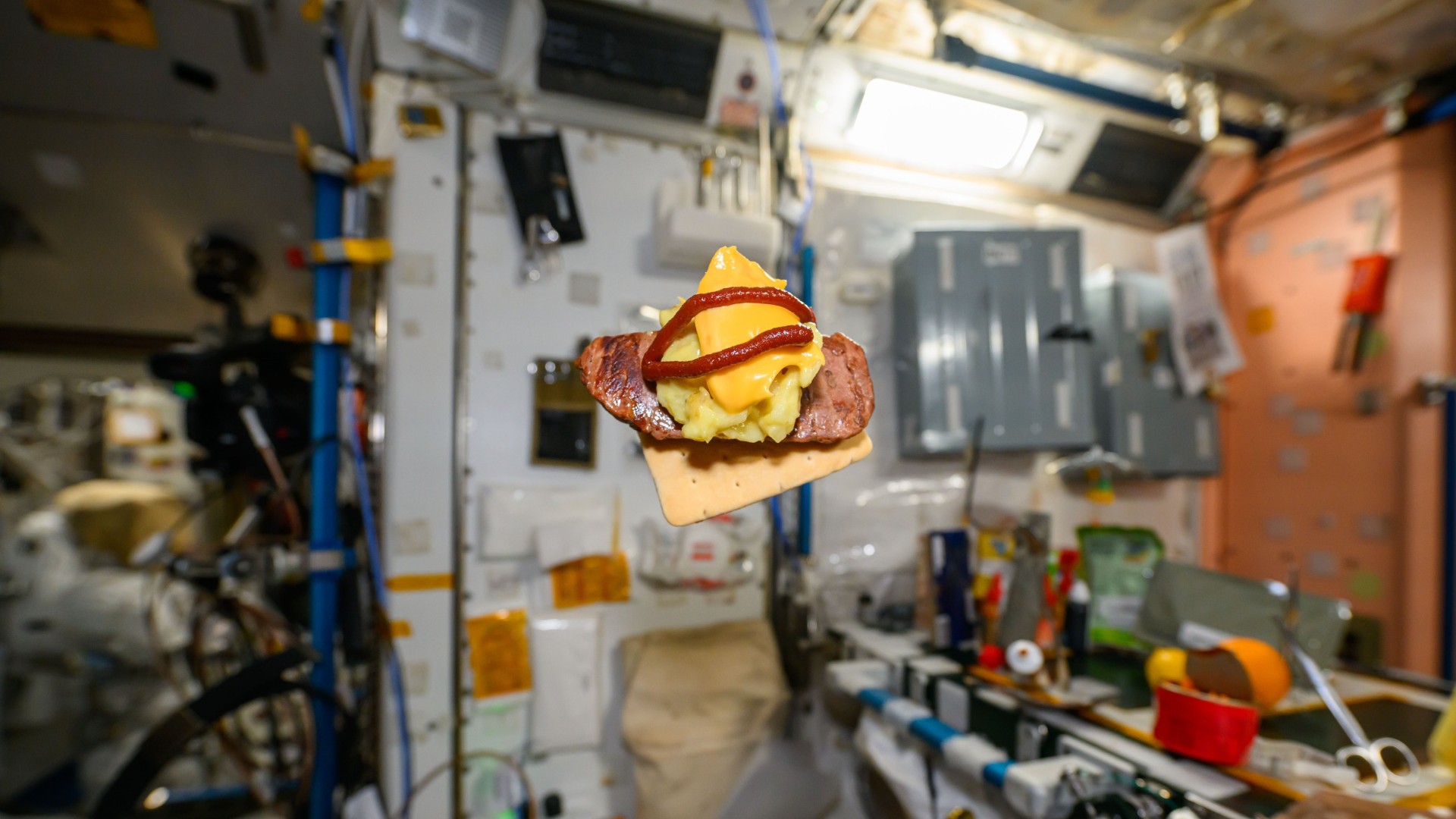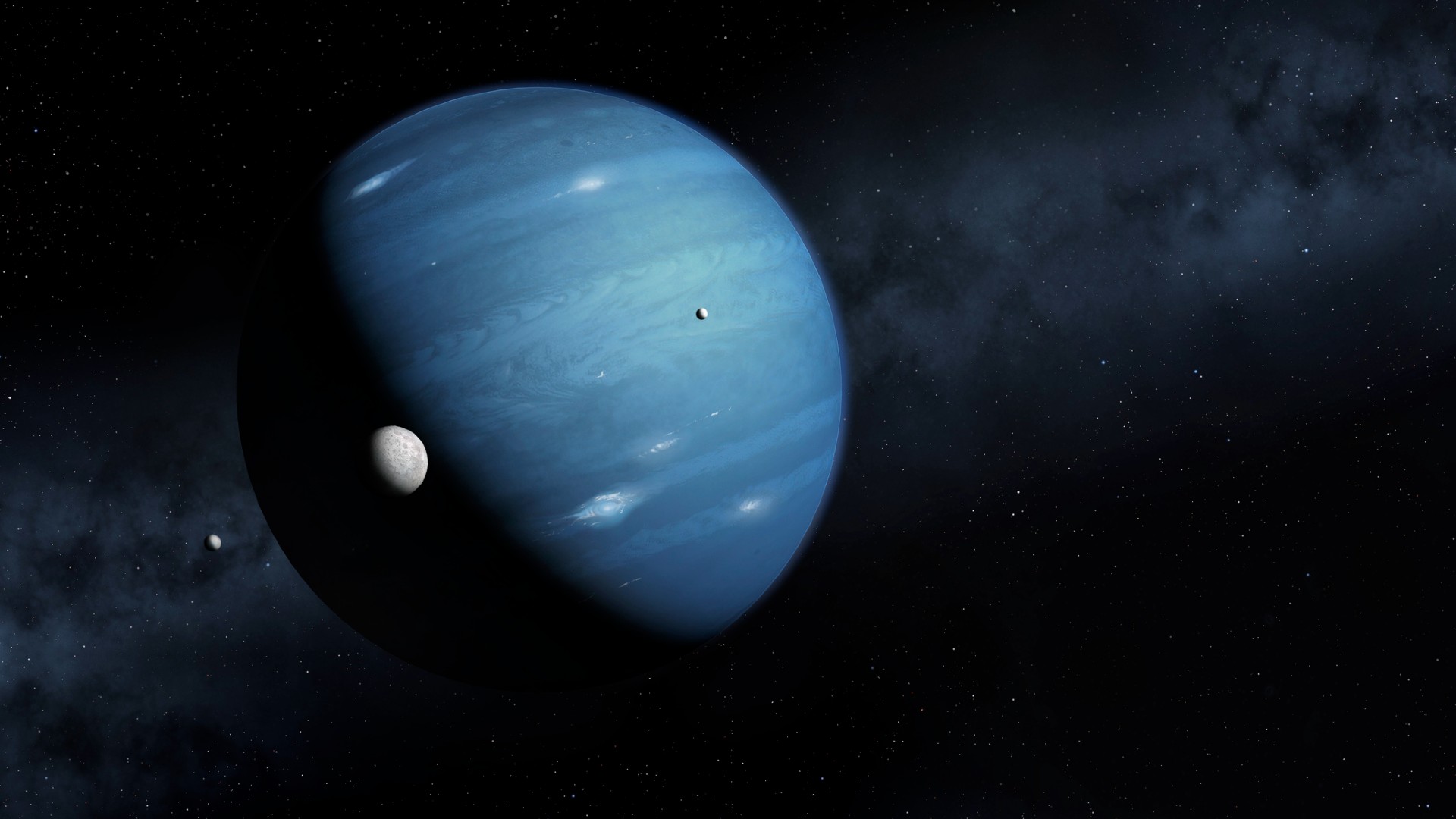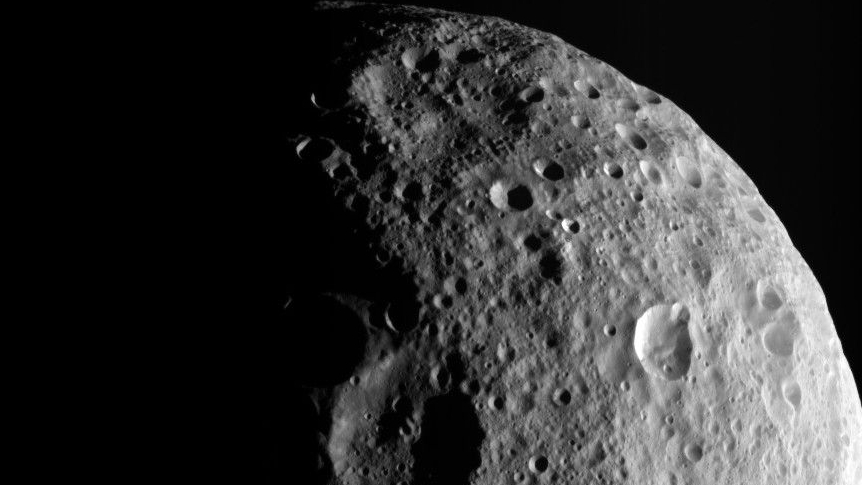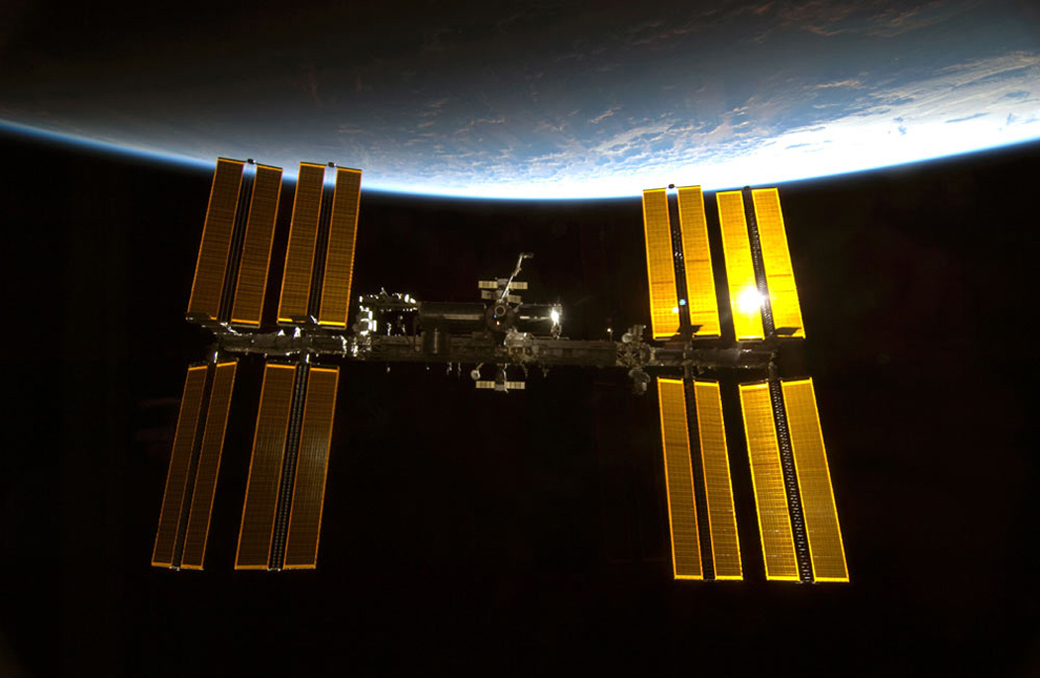
The near-miss yesterday (June 28) between the International Space Station and a piece of space junk highlights the growing threat posed by the huge cloud of debris whizzing around Earth.
The piece of space debris zipped uncomfortably close to the orbiting lab Tuesday at 8:08 a.m. EDT (1208 GMT), forcing the outpost's six astronauts to take shelter in two docked Russian Soyuz lifeboats for only the second time ever. The spaceflyers would have attempted a speedy escape in the craft had a collision occurred and severely damaged the space station.
The station's shielding protects it from a near-constant pelting by tiny motes of fast-moving debris. But those defenses would likely have been breached had the object slammed into the orbiting lab yesterday. The piece was large enough to be tracked, meaning it was at least 4 inches (10 centimeters) in diameter, NASA officials said.
It was a close call, and was the closest a dangerous piece of debris has ever come to hitting the station, NASA officials said. [Worst Space Debris Events of All Time]
"We tracked the object after it came past station," Bill Gerstenmaier, NASA's space operations chief, said in a news briefing on Tuesday. It "came within 335 meters of space station on best estimate."
Massive cloud of debris
Pieces of space trash — which may be defunct spacecraft, abandoned launch vehicles or fragments from satellite collisions — zip around Earth at speeds up to 17,500 mph (28,163 kph).
Get the Space.com Newsletter
Breaking space news, the latest updates on rocket launches, skywatching events and more!
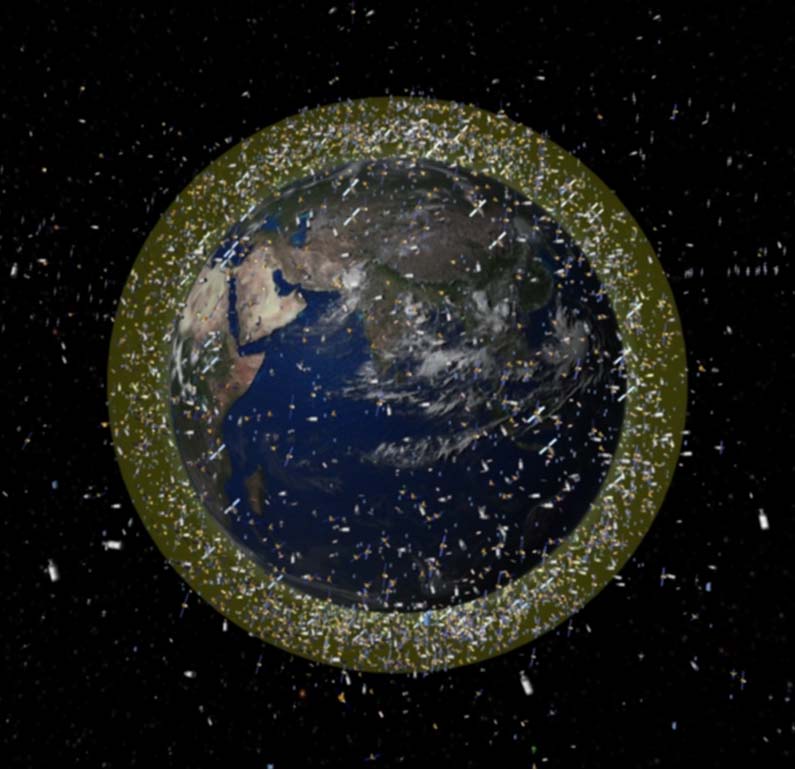
That's so fast that even orbiting paint flecks can damage a spacecraft. And there's a lot of this stuff, much of it larger and far more dangerous than paint flecks. For example, NASA estimates that there are at least 20,000 pieces at least 4 inches wide — as big as a softball — and more than 500,000 bigger than a marble.
NASA and the Space Surveillance Network operated by the Department of Defense track the debris, but the huge numbers make this a daunting challenge. And the numbers just keep growing, as more material is launched and more orbiting objects crash into each other.
Sometimes this happens by accident, as was the case of a 2009 collision between a defunct Russian satellite and a U.S. Iridium communications satellite. This smash-up added at least 2,000 pieces of space junk to the total, NASA officials said.
But sometimes collisions occur by design. A 2007 Chinese anti-satellite test, for example, added about 3,000 pieces of space junk to the orbiting population.
NASA, DARPA and other researchers have been studying potential ways to clean up space debris , including looking at ways to reduce the amount of junk created during new rocket launches.
Danger to spacecraft and astronauts
The space station's armor can generally withstand impacts by debris up to 0.8 inches (2 cm) in diameter, NASA researchers have said. But the huge numbers of large objects mean that a collision with a dangerous piece of space junk is a real possibility.
In fact, the chances of having to evacuate some of the space station's crew and send them home to Earth due to orbital debris is about 1-in-100 during every six-month period, NASA spokesman Kelly Humphries told SPACE.com. The average length of a station crew's mission is about six months.
NASA does what it can to minimize those risks. If it detects a dangerous piece of space debris soon enough, the station can be directed to make evasive maneuvers. That didn't happen in yesterday's near-miss, which came with just 14 hours of notice instead of the necessary three days or so.
The orbiting lab has made a dozen such maneuvers since 1999, including one this past April when space trash spawned by the 2009 satellite collision posed a threat.
But spacecraft aren't the only objects potentially in the line of fire. Even pieces just a few millimeters wide could be deadly to astronauts out on spacewalks (also known as extravehicular activity, or EVAs).
That's a cause for real concern, and a driving force in the effort to better track space junk and micrometeoroids — tiny chunks of rock that whiz through space.
"In the lifetime of the International Space Station, up to 2020, there's a 1-in-12 chance we will lose an astronaut on an EVA" because of micrometeoroids or space junk, Bill Cooke, chief of the Meteoroid Environment Office at NASA's Marshall Space Flight Center, said last month at the 2011 International Space Development Conference in Huntsville, Ala.
You can follow SPACE.com senior writer Mike Wall on Twitter: @michaeldwall. Follow SPACE.com for the latest in space science and exploration news on Twitter @Spacedotcom and on Facebook.
Join our Space Forums to keep talking space on the latest missions, night sky and more! And if you have a news tip, correction or comment, let us know at: community@space.com.

Michael Wall is a Senior Space Writer with Space.com and joined the team in 2010. He primarily covers exoplanets, spaceflight and military space, but has been known to dabble in the space art beat. His book about the search for alien life, "Out There," was published on Nov. 13, 2018. Before becoming a science writer, Michael worked as a herpetologist and wildlife biologist. He has a Ph.D. in evolutionary biology from the University of Sydney, Australia, a bachelor's degree from the University of Arizona, and a graduate certificate in science writing from the University of California, Santa Cruz. To find out what his latest project is, you can follow Michael on Twitter.
